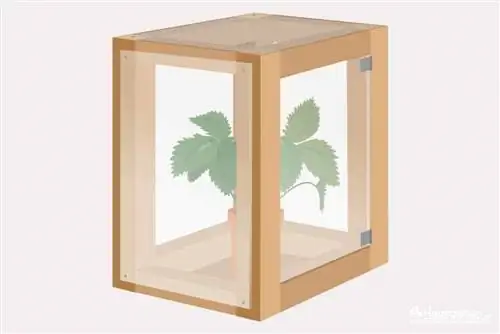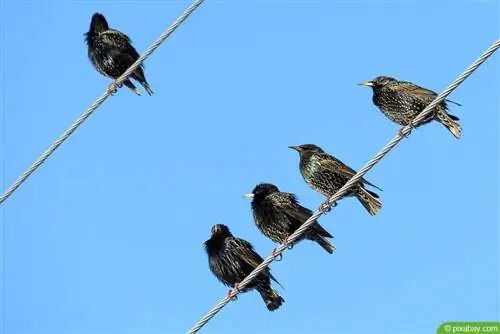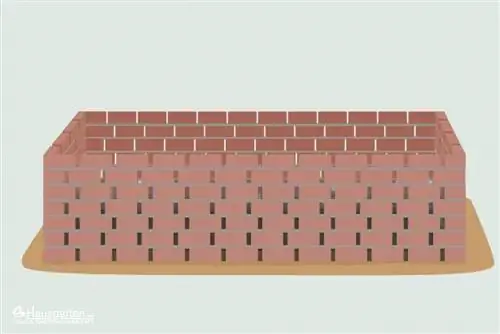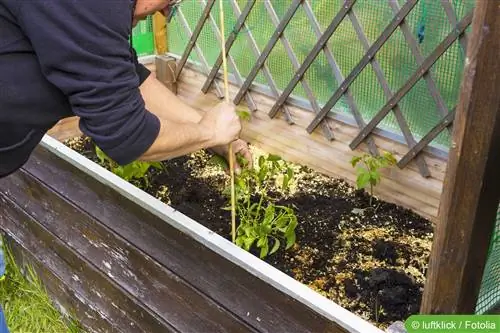- Author admin [email protected].
- Public 2023-12-17 03:39.
- Last modified 2025-01-24 12:45.
These caterpillar boxes are sold commercially, but they are also relatively easy to make yourself, which makes the matter even more interesting for children.
Material for the caterpillar box
For a self-made caterpillar box, you need some wooden strips from which the basic framework is created in the shape of a cuboid. This should ultimately have a base area of around 30 x 30 centimeters and a height of around 50 to 60 centimeters. You will also need a fine-mesh grid and some plexiglass panes for the sides. Enough air gets into the caterpillars' new home through the grille. The plexiglass panels make it possible to observe them from all sides during their molting and pupation.
Construction instructions for a caterpillar box
The wooden strips are first cut to size and screwed into a cuboid. If you like it colorful, you can paint this cuboid, but it is important to choose a product that does not emit any toxins and therefore cannot harm the caterpillars. The Plexiglas panels are then pre-drilled in order to screw them on all sides of the cuboid. Only the front remains free, as this requires a door through which the caterpillars are brought the necessary food and through which the box is cleaned. A plexiglass pane with two hinges can be used as a door.
The slightly faster version
If you don't want to do so much work, you can use an existing wooden box or a slightly more sturdy cardboard box for the caterpillar house. In this case, the base and lid are simply removed from the box or carton and replaced with a fine-mesh grid on the back and a grid or plexiglass door on the front.
Populate the caterpillar box
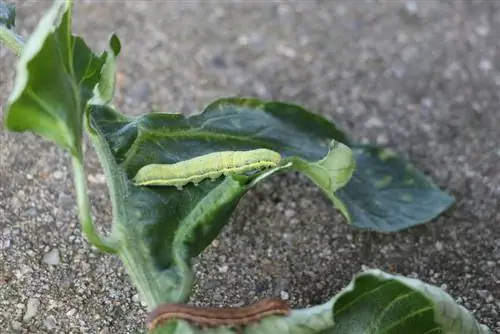
In order to be able to observe the metamorphosis of the butterflies, the caterpillars are of course still missing after the caterpillar box is completed. The best way to find caterpillars is in the nettles in the wild, on which, for example, the little tortoiseshell or the peacock butterfly lay their eggs. Whole groups of caterpillars can often be found there. In order to relocate them to their new home, the nettle branches and the caterpillars are cut off from the plant. The caterpillars should under no circumstances be touched, as they get injured all too easily.
Caterpillars need a lot of food and therefore have to be provided with new food every day. If the caterpillars have been collected from a particular plant, this is the food they need, otherwise appropriate information must be obtained beforehand. To keep the plants fresh, they are placed in a container with water. It is important to ensure that the caterpillars cannot fall into the water where they would drown. The container must therefore be closed from above so that only the stems stick out.
The observation of metamorphosis then begins. The caterpillars become larger and larger and pupate on the ceiling of the box or on a plant branch. This is the point at which the caterpillar box door should remain open so that the butterflies can fly out after pupation.

